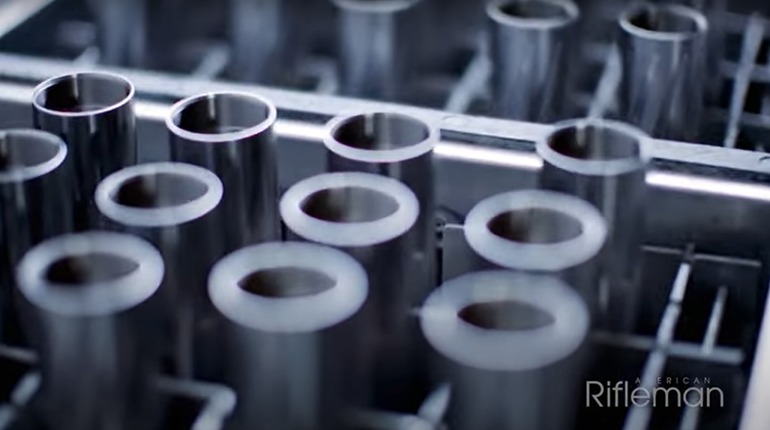
The Wait. We could insert all kinds of pop/rock lyric jokes here, but for anyone who has tried to purchase a National Firearms Act (NFA) item, such a suppressor or a short-barreled rifle (SBR), the dark void that your tax application disappears into for up to a year at a time is not a laughing matter. An upgrade to the Bureau of Alcohol, Tobacco, Firearms and Explosives (ATF) filing system, allowing Form 4s to be submitted electronically, could see that filing process simplified and approval times get shorter.
To get the details on the new eForm 4s, we spoke with Brandon Maddox, owner and CEO of Silencer Central. Silencer Central, established 15 years ago, is one of the country’s top suppressor retailers and has been involved directly with beta testing the new process with the ATF (for more about Silencer Central’s business model, read Kelly Young’s story of purchasing a suppressor through them).
“Basically it’s taking the current paper process and converting it to all digital,” Maddox explains. “Honestly, it’s the same interface we had in 2014 and ‘15. The big change is the whole government system has moved to a cloud-based system. And that seems to be what can fix it, because it can process quicker online when it’s submitted.”

For those who have never purchased a NFA item, the process goes like this. You pick out a suppressor or SBR and pay the full purchase price or put down a deposit. You fill out and submit an ATF Form 4 “Application for Tax Paid Transfer and Registration of Firearms,” submit photographs and fingerprints, pay your $200 tax and wait. And wait. And wait. According to the ATF, the average processing times for Form 4s at the end of September 2021 was eight months. Maddox says his customers, most of whom are applying as a trust, have experienced a nine to 12 month wait. By allowing applications to be submitted electronically, those wait times will be significantly shortened.
The ATF introduced electronic filing for several of its forms back in 2014. The overwhelming response to Form 4s crashed the servers and they were removed from the system and reverted to paper filing only.
The process to electronically file a Form 4 will be very similar to the current paper process. An applicant will have to create an online account with the ATF and have their identity verified. They will fill out an electronic version of the current form and upload a digital passport-type photo of themselves. Fingerprints will have to be submitted by mail, if the dealer you are purchasing from does not have a digital fingerprint system. The customer will be notified of problems or mistakes, and will receive the result of their application, by email.
“The biggest difference is that the customer will be ‘kept in the loop,’” Maddox explains. “They’ll get emails and updates of when it was submitted, when the tax stamp is paid and when it’s approved. So it creates an additional of level of transparency for the consumer.”
So the million dollar question is how fast is “faster” when it comes to application reviews?
“The ATF has told us that they are going to staff to a 90-day turnaround,” Maddox explains. “So they’re saying once the approval time gets beyond 90 days, they’ll hire more staff to keep it at 90 days.”
Not only should the process be faster, it will also be cheaper with no printing off documents and paying postage. And there is no additional charge to use the electronic filing system. For those who want to use pen and paper, that option will still be available. According to the ATF, forms that can be currently electronically filed are approved in about a third of the time as their paper counterparts. Maddox says that he expects that once the dust settles, paper and electronic Form 4s will be approved in about the same amount of time, as the number of applications submitted on paper will be greatly reduced.

EForm 4s are scheduled to be available online starting at 6 a.m. Tuesday, Dec. 21. If you have a paper Form 4 pending, hold the line. You can withdraw your paper application, however, the ATF won’t terminate your paperwork until your turn comes up in the queue, at which point, your application is ready to be evaluated anyway. So canceling a paper application and resubmitting it electronically will just extend the time it takes to get approved.
So what’s the bottom line in how the new eForm 4 will effect the end customer? Maddox says he expects approval times to be quicker, but that also demand for suppressors will increase. In his estimation, the bottleneck in purchasing a suppressor in the near future will be an individual dealer’s lack of inventory and not “The Wait” to get your application approved. To this end, Silencer Central has been stocking their warehouse shelves with suppressors.
“When we had electronic forms in 2014 and ‘15 we saw a two or three times increase in demand,” Maddox recalls. “You could tell someone, it used to be a year wait and now it’s 30 to 60 days. And that drove demand significantly, and I anticipate it’s going to do the same again.”






































